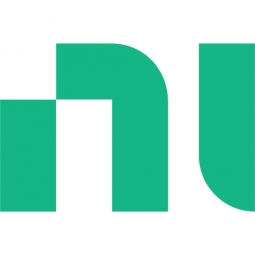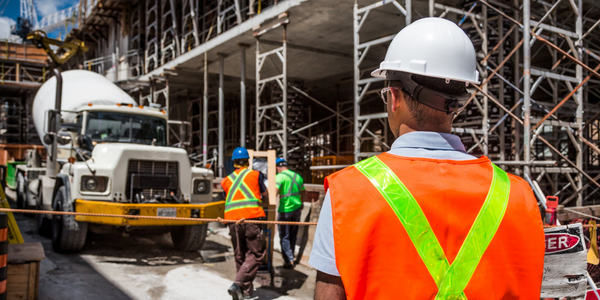
- Networks & Connectivity - RFID
- Platform as a Service (PaaS) - Data Management Platforms
- Sensors - Air Pollution Sensors
- Sensors - Gas Sensors
- Sensors - RFID Readers
- Sensors - Utility Meters
- Construction & Infrastructure
- Business Operation
- Building Energy Management
The Zenitaka Corporation ('Zenitaka') has two major business areas: its architectural business focuses on structures such as government buildings, office buildings, and commercial facilities, while its civil engineering business is targeted at structures such as tunnels, bridges and dams. Within these areas, there presented two issues that have always persisted in regard to the construction of mountain tunnels. These issues are 'improving safety" and "reducing energy consumption". Mountain tunnels construction requires a massive amount of electricity. This is because there are many kinds of electrical equipment being used day and night, including construction machinery, construction lighting, and ventilating fan. Despite this, the amount of power consumption is generally not tightly managed. In many cases, the exact amount of power consumption is only ascertained when the bill from the power company becomes available. Sometimes, corporations install demand-monitoring equipment to help curb the maximum power demanded. However, even in these cases, the devices only allow the total volume of power consumption to be ascertained, or they may issue warnings to prevent the contracted volume of power from being exceeded. In order to tackle the issue of reducing power consumption, it was first necessary to obtain an accurate breakdown of how much power was being used in each particular area. In other words, we needed to be able to visualize the amount of power being consumed. Safety, was also not being managed very rigorously. Even now, tunnel construction sites often use a 'name label' system for managing entry into the work site. Specifically, red labels with white reverse sides that bear the workers' names on both sides are displayed at the tunnel work site entrance. The workers themselves then flip the name label to the appropriate side when entering or exiting from the work site to indicate whether or not they are working inside the tunnel at any given time. If a worker forgets to flip his or her name label when entering or exiting from the tunnel, management cannot be performed effectively. In order to tackle the challenges mentioned above, Zenitaka decided to build a system that could improve the safety of tunnel construction as well as reduce the amount of power consumed. In other words, this new system would facilitate a clear picture of which workers were working in each location at the mountain tunnel construction site, as well as which processes were being carried out at those respective locations at any given time. The system would maintain the safety of all workers while also carefully controlling the electrical equipment to reduce unnecessary power consumption. Having decided on the concept, our next concern was whether there existed any kind of robust hardware that would not break down at the construction work site, that could move freely in response to changes in the working environment, and that could accurately detect workers and vehicles using radio frequency identification (RFID). Given that this system would involve many components that were new to Zenitaka, we decided to enlist the cooperation of E.I.Sol Co., Ltd. ('E.I.Sol') as our joint development partner, as they had provided us with a highly practical proposal.
Develop an IoT ('Internet of Things') system using CompactRIO that can detect the workers and vehicles, measure the concentration of substances such as dust or combustible gases, and monitor and control various kinds of electrical equipment. Use the data collected to confirm that the safety of workers can be assured, and then reduce the amount of unnecessary energy consumption by automatically controlling the lighting and ventilating fan. E.I.Sol put forth various proposals in response to Zenitaka's system concept and its corresponding requirements. One suggestion was to use products from National Instruments (NI) as a means of realizing the system. Specifically, E.I.Sol suggested that we use NI LabVIEW as the software platform and NI CompactRIO as the hardware platform to build the system. This system is composed of a server located on site, such as in the office at the construction work site, and multiple control terminals with allocated IP addresses. CompactRIO worked as the control terminals, and the required functionality has been developed using LabVIEW. Each control terminal is fitted with components such as an RFID reader for detecting workers and construction vehicles entering the tunnel, a densitometer for measuring the concentration of substances such as dust and combustible gases, and a wattmeter monitoring the operational status of the construction lighting, ventilating fan, and tunnel excavating machinery. These terminals are attached to each piece of electrical equipment that will be controlled, as well as to the electrical distribution boards that are positioned every 100 m within the tunnel, and all are linked to the server via the network. Each control terminal collects data on the position of workers and vehicles within the tunnel, as well as on the concentrations of various gases, and sends this information to the server. Data received by the server is analyzed and processed, and instructions for controlling the lighting and ventilating fan are then issued to the terminals based on the data results. This mechanism correlates the various kinds of measurement data with the electrical equipment, and utilizes the IoT for intercommunication to control and automatically reduce power consumption. CompactRIO-based distributed measurement systems use CompactRIO to perform measurements and process data. In most cases, these results are only sent in a single direction: upstream to the server. However, the TUNNEL EYE system is also able to send data downstream from the server to CompactRIO. This two-way data transfer is one of the special features of the TUNNEL EYE system.

Case Study missing?
Start adding your own!
Register with your work email and create a new case study profile for your business.













